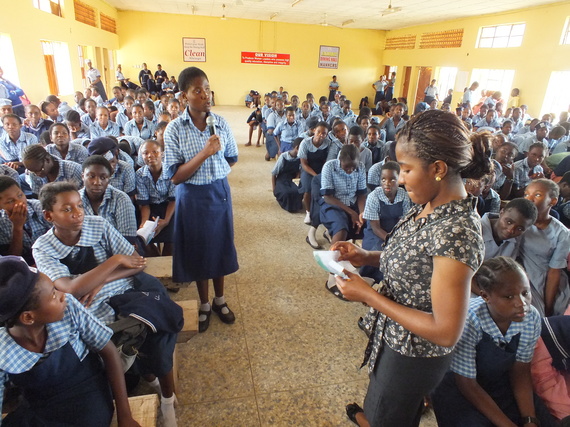Children and youth of all genders have a right to inclusive, quality education--the foundation to improving people's lives. Yet an estimated 62 million girls are out of school. And with 1 in 3 women experiencing physical and/or sexual assault in her lifetime, we're beginning to understand that the interplay of violence, gender, and education is powerful and complex and demands more of our attention.
In some communities around the world, a girl is more likely to be sexually assaulted than she is to become literate. Violent, coordinated attacks are targeting schoolgirls. And while overall enrollment rates for girls in primary school have improved globally, in many places gender gaps remain, especially in secondary education. Adolescence is a time of particular vulnerability. And harmful practices such as early and forced marriage affect 15 million girls a year and can be both "a cause and consequence of school dropout."
The threat and reality of violence hinders girls' access to education and undermines their ability to learn. Girls who are survivors of violence may leave school, most notably if that's where their assault occurred, or face difficulty concentrating due to the effects of trauma. And girls who become pregnant can be pressured to quit school by their communities or may be outright banned by official school or government policy.
Families' desire to protect their daughters, while understandable, can itself serve as a barrier to girls receiving or completing their education. In places where a girl may have to travel great distances to attend school, for example, her parents' concern for her safety may cause them to curtail her education. Girls themselves may abandon their schooling because they feel threatened by abuse or because they experience harassment from classmates or from teachers.
Joyce Warner, Senior Vice President of IREX, who recently testified to the House Committee on Foreign Affairs on the value of technology and education for girls, says, "Girls everywhere have the right to receive a safe and quality education. It is also one of the smartest investments society can make."
"Gender," of course, doesn't just refer to girls. Violence can manifest differently for boys in the realm of education, such as a greater likelihood that they will receive corporal punishment, pressures to abandon their education in order to work, and sexual violence as well.
Lesbian, gay, bisexual, and transgender youth or children who don't conform to gender norms can experience distressingly high levels of violence from peers, family, and their communities. Transphobic and homophobic bullying may force youth to flee school in order to escape violence and harassment.
As critical as it is to acknowledge the global phenomenon of gender, violence, and education, it is equally important to cite where progress is being made. Around the world, youth, men, teachers, and elders are raising their voices to join the long-standing work of women's organizations in speaking out against the ways violence violates girls' rights to their agency and education.
New initiatives are adding much-needed resources to the growing body of evidence of what works to improve girls' education, such as:
- Implementing longer, comprehensive approaches that involve not only schools and teachers, but surrounding communities;
- Creating or strengthening codes of conduct and well-promoted monitoring and reporting systems;
- Establishing appropriate services and referral systems for survivors of violence;
- Bolstering girls' agency and resiliency, from digital literacy skills that help them amplify their voices online to non-formal education opportunities to build leadership skills and engage with strong women mentors; and
- Promoting lifelong learning and training teachers and school administrators on the dynamics of gender and education--critical components of Sustainable Development Goals 4 and 5.
It is vital that all of us--parents, teachers, students, governments, and international development groups--act in conjunction to amplify the headway we've made and advance evidence-based interventions so that children of all genders can claim their right to education and achieve their fullest potential.

